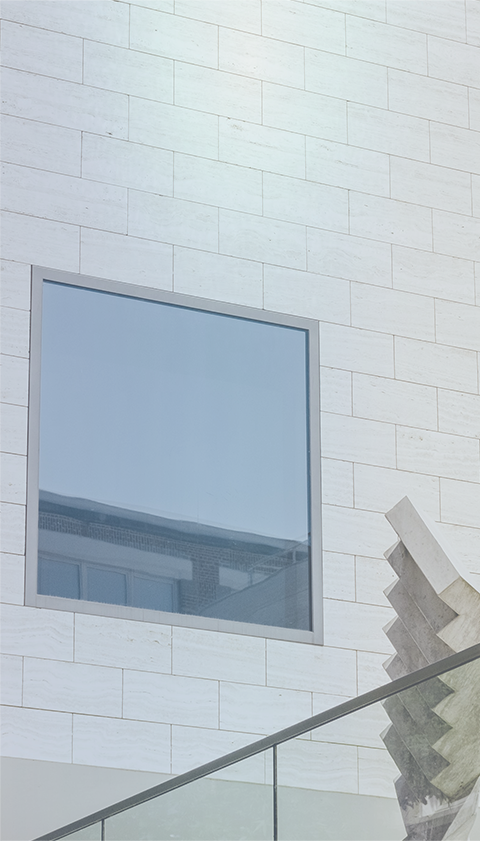AMG MIRROR &
GLASS
B-929 Brock Rd.
Pickering, Ontario
Canada, L1W 2X9
782 McKay Rd
Pickering, ON
L1W 2Y4
905.837.2043
info@amgmirrorandglass.ca


According to the popular Netflix series Squid Game, knowing the differences between tempered and regular glass can be a life-saving skill. In episode 7 of the show, contestants had to play a game of “Glass Stepping Stones,” in which they had to cross a bridge composed of two types of glass panels: regular (non-tempered) or tempered glass. Tempered glass, they were told, could hold the weight of two players, but regular glass would shatter with just one. Following the path of tempered glass panels, then, is how they would complete the round and reach safety.
This begs the question: can you really tell the difference between non-tempered and tempered glass? The short answer is yes, there are visual ways to distinguish between the two, and our experts at AMG will debunk the episode for you.
Regular or non-tempered glass is made using a process that cools the glass down quickly, making it easier to create more glass in less time. Additionally, it’s a more versatile glass for many companies due to its ease of cutting, reshaping, and polishing.
However, this also means that it’s a more fragile glass that’s more likely to fracture or shatter, creating large, sharp pieces that are more hazardous when broken.
Because of its versatility to be formed into shapes, non-tempered glass is mainly used for:
Tempered glass is a strong and difficult-to-break alternative to regular glass. Tempering, a rapid cooling and heating procedure, gives the glass its safety properties. Thanks to its heat treatment, tempered glass can be four to five times stronger than regular glass, enough to withstand even severe winds and tremendous stress.
Tempered glass has extensive uses, most notably in:
It’s easy enough to understand that tempered glass is preferable when it comes to bearing weight, but are there ways to quickly tell them apart using visual cues? Below are some major indicators of tempered glass:
Sandblasting is required for tempered glass, so one smart technique carefully examines the edges of a panel. Because of its additional heat-treated processing, tempered sheets have smooth and equal edges. The edges of the non-tempered glass, on the other hand, will feel abrasive to the touch. So, the easiest way to get a sense of it is to run your fingertips over the edges. The smoothness of the sensation indicates that the glass has been tempered.
If you can see any distortions or mild bending on the glass, it is most likely tempered glass. The high heating method is to blame for these flaws; when glass is tempered, it becomes repairable when extremely hot. The procedure may leave minor defects when picked up with tongs. You can see it for yourself if you look attentively.
You can also determine whether a piece of glass is tempered by using polarized glasses. Checking the glass under sunlight, polarized lenses will reveal darkening shadow lines or patches all across a piece of tempered glass. These lines are a result of machine rollers that pass over the glass during the tempering process. Unfortunately, when one of the players in Squid Game figures this out, the game managers decide to turn off the lights, leaving only the next method possible.
One of Squid Game’s players hints that listening to the sounds made by either glass can help differentiate between regular and tempered panels. Using a marble, he tosses it onto a panel, but what was he listening for?
Because tempered glass is created at temperatures exceeding 700 degrees Fahrenheit, it’ll ring clearer than regular glass when tapped lightly with an object. Also, because of an additional stress layer after strengthening, tempered glass will create a heavier sound than regular glass.
Because of its strength and safety properties, tempered glass is often preferred for any applications that will cause stress to the glass, such as wind or weight, while regular glass will be used for smaller, more intricate objects due to its formability and versatility.
While tempered glass is a clear preference when you’re playing Squid Game, that’s not always the case in the real world. For advice on choosing the right glass outside of Squid Game, AMG’s experts are here to help (just don’t ask us to play Glass Stepping Stones!). The most important difference between Tempered and Regular Glass is the safety value. Regular Glass breaks into dangerous shards with very sharp edges, where Tempered break into very small pieces that are not as sharp and can be handled safely.
Interested in installing? Contact AMG Mirror & Glass, and speak to one of our specialists about the best Durham region sneeze guard solutions
B-929 Brock Rd.
Pickering, Ontario
Canada, L1W 2X9
782 McKay Rd
Pickering, ON
L1W 2Y4
905.837.2043
info@amgmirrorandglass.ca

